How To Fix A Misaligned Jaw

Many orthodontic patients suffer from a misaligned jaw that affects how teeth sit in the mouth and causes bite problems. Overbites, where the upper teeth protrude, and underbites, when the lower teeth sit out farther than the upper teeth, can cause physical and emotional discomfort. If left untreated, a misaligned jaw can affect how you eat, speak and sleep. Luckily, there are many types of orthodontic treatments and appliances that are used to correct misalignments and give you your confidence back. Find out what to do if you have a misaligned jaw with this guide!
What A Misaligned Jaw Looks Like
Many people receive orthodontic treatment to fix their crooked teeth, but braces can also resolve bite issues, as well. Braces are great ways to fix misaligned jaws in children and adults and help prevent the consequences of underbites and overbites. Misaligned jaws are often painful and obvious, and many children are unfortunately teased by their peers because of it. Our “bite” refers to how the upper and lower teeth meet together, which influences how we chew, eat and speak. The two most common bite problems are an underbite and overbite, with an underbite occurring whenever the lower jaw sits in front of the upper jaw while the overbite happens when the upper jaw protrudes abnormally over the lower jaw. While these deformities look awkward, they have consequences that are more serious than aesthetic concerns. Underbite create a bulldog appearance as the lower jaw protrudes out, which not only puts a lot of stress on the joints but also causes tooth wear. Overbites create buck teeth that stick out so far that they can easily break and make it difficult to close the mouth and lips. They also create an elongated face, speech problems and increase the likelihood of tooth decay as oral tissue dries out. Depending on the severity of the misalignment and which bite is involved, treatment options such as braces, cosmetic dentistry and surgery are common ways to fix the problem.
Treatment Options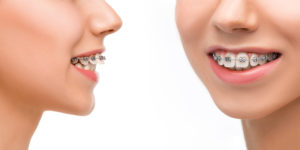
For crooked or crowded teeth and misaligned jaws, braces are the standard treatment performed for most patients. Traditional braces with brackets cemented to the teeth and attached with an archwire help with overbites to straighten the upper front teeth and bring them into a non-protruded position. For extreme cases of overbites and underbites, headwear braces may be necessary. These devices are made with internal and external wires, along with straps that fit over the head and neck, to move the upper jaw either forward or backward. Headwear braces are typically worn for 12-14 hours a day, but are only needed whenever traditional braces cannot fix misalignment. For underbites, an upper jaw expander is recommended to widen the palate of the mouth so that the lower teeth move back into position. The expander is placed in the upper palate of the mouth and widened each night with a special key, and after one year, the palate should be wide enough for both the upper and lower jaws to fit together. For the most serious cases of jaw misalignment, orthognathic jaw surgery will be required. Plates, screws and wires will be surgically placed into the jaw by a maxillofacial surgeon to permanently correct bite problems, which will greatly improve speech and sleep.
Importance of Orthodontic Visits
While many bite problems are obvious, some are so slight that detection will be hard to notice. In these cases, it’s important that children and adults have regular orthodontic visits so that teeth movement and development can be monitored. Orthodontic visits, especially in young children, are essential to observe incoming teeth, reduce the risk of impacted teeth, monitor jaw development and detect hidden dental issues. Not only will your teeth be examined, but your jaws and mouth will be reviewed for signs of underlying conditions, decay and disease, as well as thoroughly cleaned. These visits also provide patients the information they need to establish good dental habits early on to keep their teeth healthy and free from decay both during and after orthodontic treatment.
Get Straighter Teeth With Our Help!
At Belmar Orthodontics, we specialize in helping children and adults alike fix malocclusion, adjust misaligned jaws and get the smiles that they deserve. Whether you or your child has an underbite, overbite or crowded teeth, our team can help you remedy any issue that you are experiencing. Through specialized orthodontic treatment plans and advanced appliances, your mouth issues can be fixed within a short period of time. Call our office today at (303) 225-9016 to get a straighter smile today!
Signs That You Might Need Braces
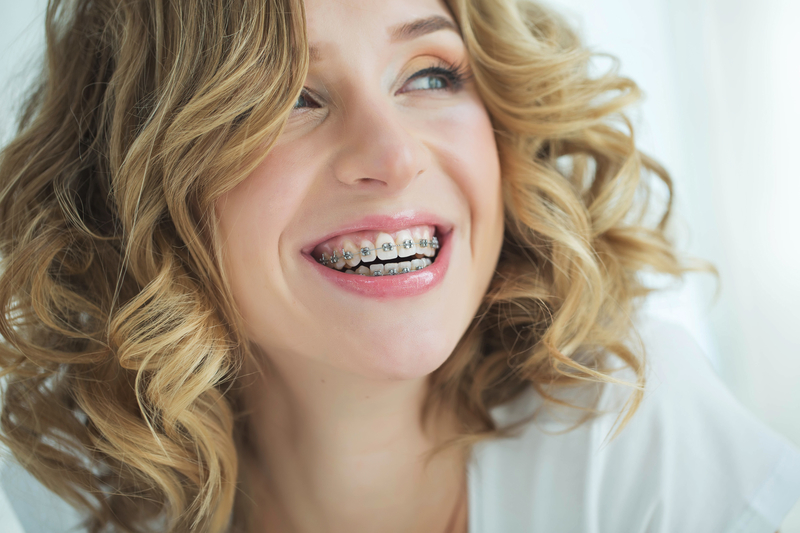
For many patients, getting braces is a big decision that affects oral health. How do you know whether you or your child needs braces, though? Some symptoms are obvious: misplaced or crowded teeth, or teeth that don’t meet normally. Other signs that you need braces are more inconspicuous, though, such as biting the cheek or a jaw that pops or shifts. While some of these symptoms are more serious than others, orthodontic care is the way to go to alleviate pain and correct any underlying issues. Learn about what signs you should be looking for to decide if braces are right for you with these tips!
What To Look Out For
As our teeth begin to erupt at a young age, they can fill into improper spaces or cause problems with adjacent teeth. Crooked or misaligned teeth aesthetically aren’t very pleasing for people, and most patients end up receiving orthodontic treatment during some point in their lives. Orthodontic problems don’t always mean crooked teeth, though. While there are some obvious signs that you might benefit from orthodontics, such as crowded teeth or an underbite/overbite, there are other symptoms that are less noticeable but equally as undesirable. The American Association of Orthodontics recommends that children have their first orthodontic visit between the ages of 7 and 8, but if certain complications are present, your child does not and should not wait until that age to be seen. If you have a young child, look for some of the following symptoms that warrant orthodontic care:
- Thumb or finger sucking
- Early, late or irregular loss of baby teeth
- Difficulty in chewing or biting
As children age, orthodontic problems will begin to show themselves, but some don’t appear until adulthood. No matter your age or prior orthodontic care, there are other symptoms that indicate a problem and should be addressed by an orthodontist. If you are struggling with a popping jaw, have to breathe through your mouth on a regular basis, are constantly biting your cheeks, and/or noticing teeth or jaws that are out of proportion to the rest of your face, you should have an orthodontic consultation. While many of these symptoms seem harmless or aren’t very noticeable, they can have long-term consequences that can negatively affect your oral health. Braces can remedy these issues so that your oral health isn’t compromised. It’s never too late for you to take charge of your oral health and get the smile that you deserve!
Advantages of Early Orthodontics
Not all kids will need orthodontic care, but many will. Meeting with your child’s dentist early on will help them determine whether your child would benefit from orthodontic treatment. If you have a child who needs an orthodontic issue remedied, there are certain advantages that come after receiving braces. Having your child evaluated by an orthodontist can help he/she observe the progress of incoming teeth, guide teeth into their ideal positions, monitor face and jaw development, detect hidden dental issues and reduce the risk of impacted teeth. For young children, orthodontic visits can sometimes be scary. Nonetheless, child orthodontic visits are simple and non-intrusive, so as to keep your child comfortable and happy. At Belmar Orthodontics, we do our best to give your child the care they need while making sure that their fears and questions are addressed. For adolescents, our options at include aesthetically-minded treatment options that will help your teen feel less self-conscious about braces. Braces can sometimes be seen as “dorky” or “uncool” for teens, but the list of options your teenager can choose from will give them plenty of choices to get straight teeth while still looking cool. Good oral health habits are started at a young age, and bringing your child in to see the orthodontist will help them establish those habits that will last a lifetime.
How You Can Benefit From Adult Orthodontics
Against popular belief, braces and orthodontic care aren’t just for kids and teenagers! In fact, one in five orthodontic patients is an adult; in just the U.S. and Canada alone, more than a million orthodontic patients are adults! You, as an adult, can benefit from the same care that young patients do and fix the orthodontic problems that you’ve been suffering from since childhood. As long as your teeth are healthy, you can receive orthodontic treatment at any age. The most common benefits of adult orthodontics include the following:
- More discreet treatment methods
- Correction of lifetime dental issues
- Faster treatment time than previous treatments
- Increased confidence and self-esteem
It’s important to note, however, that any previous orthodontic problems, such as periodontal disease or decayed/missing teeth, will need to be addressed before an orthodontic appliance can be placed. Once those issues are fixed, you’ll be fitted with braces and can continue your life just as usual. If you so choose, you can even opt in for hidden lingual braces or Invisalign clear, which will get you the straight teeth that you want while being completely unnoticeable. Speak with your orthodontist to determine which braces would be best for your needs before making any decisions.
Staying On Top Of Your Oral Health
Before any patient can receive orthodontic treatment, the health of their teeth, gums and mouth will first be evaluated. For this reason, it is important that children and adults alike are brushing twice a day and flossing on a nightly basis. The foods we eat also affects our oral health, as well. Especially during orthodontic treatment, certain foods, like sticky or sugary candies and food, can damage orthodontic appliances and make it easier for tooth decay to develop as plaque builds up on teeth. Brushing and flossing will partly diminish the effects of these foods, but not entirely. Make sure that you and your children are eating a healthy diet with minimal sugary snacks to avoid dental complications during treatment.
To ensure good oral health during and after orthodontic treatment, schedule an appointment with Belmar Orthodontics at (303) 225-9016 for a consultation.
Interesting Facts About Teeth and Dentistry

Our teeth are one of the most important parts of our bodies, and they are each unique to us. Our teeth are like a fingerprint: they are individual to us and never the same as anyone else’s. Teeth perform specific functions that are essential for speaking and eating. Our teeth have enamel, which is the hardest substance in the body and it protects our teeth from decay. The more that we learn about our teeth, the more important it is for us to take care of them. Find out what all our teeth do and how they help us with this guide!
Facts About Dentistry
For hundreds, and even thousands, of years, dentistry has been an important aspect of human’s lives. Even though dental technology and knowledge might not have been as well known a few thousand years ago, our ancestors still understood the importance of taking care of their teeth. People have been caring for their teeth for centuries, and historians have found evidence of dental care dating back to 5000 B.C. in ancient Egypt. The Egyptians would use crushed eggshells and ground animal hooves to clean and polish their teeth, before toothbrushes were invented. The first toothbrushes that were used anciently were actually twigs, or tree bark, that our ancestors would chew on, hoping that the frayed ends would clean their teeth. It wouldn’t be until the 1700s when a British inventor created an adapted version of a toothbrush that he had seen in China, one with a bone handle with boar bristles inserted into small holes that lined the brush and then secured with wire. Even up to the 1930s, toothbrushes were still rudimentary, until brushes with nylon bristles and ergonomic handles were developed, which is what we still use today.
Facts About Teeth
Although oral hygiene was important to our ancestors, little was known about the function and specifics of teeth that modern technology has allowed us to learn about in our day and age. Teeth are the hardest substances in our bodies, and enamel helps keep them strong and durable. We use teeth to eat, speak and chew, so they’re an important part of how we live. Even though they are hard, white and contain calcium, teeth are not bones! They cannot heal themselves or grow back if they sustain damage, so it’s very important that we are careful with what we eat and the activities that we engage in to avoid any unnecessary trauma. Additionally, teeth contain stem cells. Some researchers are even trying to use dental stem cells to regrow human teeth, which, if they can do it, would mean that we could replace lost adult teeth for the first time in history. Not only do teeth have stem cells, but they are also unique to each one of us and tell a story. Each tooth in our mouths is unique and different from the rest, and never is identical to someone else’s. Our teeth reveal how old we are, what we eat and even areas of the world that we have lived in! They are a lasting record of our life’s history.
Our mouths, and the teeth that are found therein, perform amazing functions that facilitate our ability to eat and digest food properly. Although they may be amazing, our mouths have some unusual quirks that most people don’t know about. The following are some of the weird facts about our mouth and teeth that one should think about:
- Teeth form in the womb, months before a child is even born. The crowns of babies’ first 20 teeth are already under the gumline when they are born, waiting to erupt.
- The average human produces 25,000 quarts of saliva in their lifetime, enough to fill two swimming pools.
- Plaque found on teeth contains more than 300 kinds of bacteria.
- Humans spend 38.5 days of their life brushing their teeth.
Good Dental Habits To Have
Now more than any generation before us, we have a limitless amount of options to choose from to protect our oral health and develop strong, healthy teeth. Our teeth do so much for us, so it’s important that we do everything we can to protect them. First and foremost, brushing and flossing should become part of our daily routine. Especially if your or your child has braces or an orthodontic device, maintaining a strict brushing and flossing regimen will prevent tooth decay and cavities. Brushing removes debris on the surface of the tooth while flossing removes food particles that can get stuck between teeth or near the gumline, where plaque can easily build up. Furthermore, regular checkups for both you and your child with your dentist and/or orthodontist will allow them to monitor teeth movement and keep your teeth as shiny and beautiful as possible.
For more information on what you can do to protect your teeth with or without braces, call Belmar Orthodontics at (303) 225-9016! Our dedicated team is committed to helping you and your family receive the care that you need and get the smiles that you deserve!
The Impact Of Straight Teeth On Oral Health
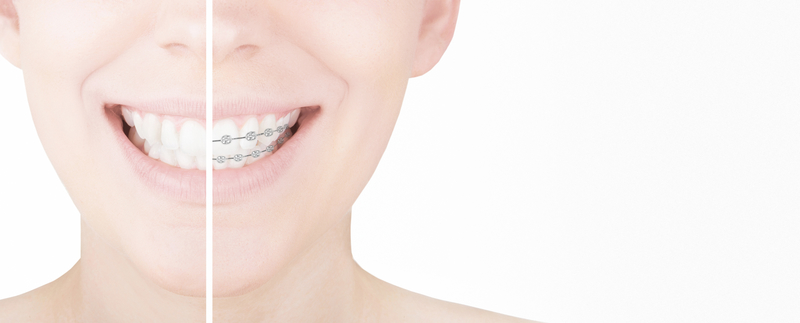
Many orthodontic patients use braces so that they can have straight teeth, but that’s not the only reason why orthodontic care is so important. Having straight teeth can minimize the likelihood of tooth decay and tooth loss while improving your bite, which affects your ability to chew and speak. Correcting crooked teeth can also improve your oral hygiene and strengthen teeth. Learn more about the positive effects that straight teeth can have on your oral health through this guide!
How Straight Teeth Can Help You
One of the main goals of braces is to create a straight smile and correct any orthodontic issues that may prevent teeth from remaining straight. While orthodontics does focus on straightening patients’ teeth, this is not the only purpose of receiving orthodontic care. Whenever a patient has malocclusion, or bad bite, caused by crowded or crooked teeth, daily oral hygiene can become a difficult task. Malocclusion can also stem from teeth that are out of alignment, or jaws that do not meet properly. Thumb sucking or accidents to the teeth can also cause malocclusion. As oral hygiene becomes more difficult to maintain, the likelihood of dental complications, such as tooth decay, periodontal disease, and tooth loss, increases. An improper bite that goes unaddressed can negatively affect chewing and speaking, and wear down tooth enamel. Correcting these problems is of utmost importance to your orthodontist as they seek to give you the best care possible. Orthodontic care that helps straighten teeth can decrease and ultimately eliminate the chances of any of these complications from arising. With straight teeth, patients can better brush and floss their teeth, which will help strengthen them, while easily monitoring any changes that may occur.
What To Expect With Orthodontics
As you begin your orthodontic treatment, there are a few tips that you should know to prepare yourself for what will be expected of you during your time with braces. Although there are some challenges with straightening adult teeth versus children’s teeth due to the pliability of the jawbone, modern technology allows any adult of any age the opportunity to correct crooked teeth with remarkable success. You will first meet with an orthodontist for an evaluation and orthodontics consultation to determine what option is best for your mouth. Any oral health issues, such as gum disease, will have to be resolved before you can begin treatment. Adults have a variety of options to choose from for their orthodontic care, with many discreet options, such as ceramic or clear braces, lingual braces, and Invisalign clear removable retainers, that are available for your needs.
For children, treatment is similar to that of adults and can start as early as the age of 7. Having an orthodontic examination early on can prevent the progression of orthodontic issues that are present and allow the orthodontist to monitor the development/eruption of teeth. Aesthetically-minded treatment options, such as incognito lingual braces, are available for young children who may be self-conscious about their orthodontic care. Most children and adults can expect treatment for 1-3 years, followed by a period of time in which a retainer will be used to keep teeth in their newly aligned positions. Regular dental and orthodontic visits will be necessary to track the progress of teeth and manage any plaque or tartar buildup that could accrue between teeth.
How To Keep Your Straight Teeth Healthy
Once you or your child finishes orthodontic treatment, it is important to continue certain oral health standards to maintain the health of your gums and teeth. Eating a healthy diet, with or without braces, while limiting the amount of sugary foods you consume, will prevent plaque that can stain or damage your teeth. Brushing with fluoride toothpaste and flossing each day will also prevent any plaque buildup, prevent cavities, and keep your teeth clean. Good oral hygiene is especially important for patients wearing braces because you are more susceptible to plaque buildup around brackets and underneath wires. For additional protection, consider using a mouth guard while playing any sports or activities that could damage your mouth, if hit. Creating a good oral health regimen before you start orthodontic treatment will help you have a healthy mouth during and once braces are removed.
For more information on the importance of straight teeth on oral health and what you can do to get the straight teeth that you want, call Belmar Orthodontics at (303) 225-9016! If you’re ready to change your smile for the better, our team is ready to help you reach that goal for you and the rest of your family!
How Upper Jaw Expansion Can Benefit Your Child
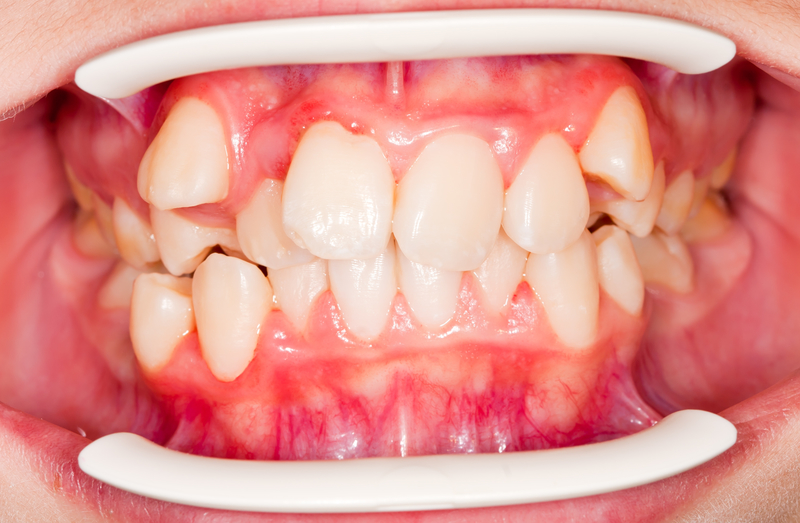
Upper jaw expansion is an orthodontic treatment that creates more space growth for developing kids by widening the circumference of the palate. This procedure helps correct crossbites, reduces overcrowding, and improves breathing ability. Most adolescents will receive this treatment before 16 years of age, but adults can also expand their upper jaw, if needed, as well. Read on to find out how upper jaw expansion works and what the advantages are with these tips!
Jaw Positioning and Malocclusion
Many patients deal with malocclusion, or crooked teeth and a poor bite. A poor bite refers to the way the upper and lower teeth line up, which is affected by the structure of the jaw. A “normal bite” consists of the upper teeth sitting slightly forward of the lower teeth, which allows for proper movement. Malocclusion is normally a cosmetic problem, but when it interferes with how teeth erupt, it can cause crooked teeth and tooth decay. A common cause of malocclusion is having too much or too little room in the jaw, which affects whether teeth grow in crowded or crooked. The shape and size of the jaw can also affect how severe someone’s malocclusion is, but thumb-sucking and tooth loss can also influence this process. For many patients, especially children, malocclusion is caused by a limited amount of space in the mouth for teeth to grow, so they either grow in crooked or the bite is altered. For this reason, many young dental patients receive upper jaw expansion treatments to allow more room in the mouth and prevent malocclusion. As more study and insight has been gained on the structure of the mouth, there are now more possibilities to fix incorrect bites, adjust occlusion and prevent crooked teeth starting from an earlier age.
Reasons For Upper Jaw Expansion
Upper jaw expansion is a specific treatment for widening the circumference of the palate to increase the perimeter of the dental arch in the mouth, which creates more space for teeth to grow. When there is enough room for teeth to grow, they are more likely to develop correctly. During childhood, palatal or maxillary expanders are used to aid this process. Through these expanders, dentists can help correct a crossbite that is caused by malocclusion. Normally, the upper teeth should close around the outside of the lower teeth, but when someone has a narrow palate, the opposite can occur and create a crossbite. As the upper teeth bite inside the lower teeth, an asymmetrical growth of the lower jaw can develop and change the symmetry of one’s face. This can cause serious complications if not addressed early on. Lastly, upper jaw expansion methods improve breathing ability, which is greatly affected by a narrow jaw. A narrow or deep upper jaw can make it difficult for a child to breathe through their nose and results in constant mouth breathing. While it doesn’t sound very serious, consistent mouth breathing keeps the mouth open at night, allowing for unfiltered bacteria to enter into the oral cavity, causing dry mouth and halitosis (bad breath).
Treatment Options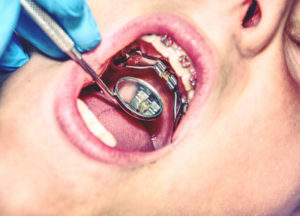
Upper jaw expansion is most successful when done at an earlier age while the mouth is still developing. For adults, those with a crossbite may only need a dental expansion instead of a palatal expansion, but may need surgery if palatal expansion is required to fix concerns. Depending on the age of the patient and the reason for treatment, a rapid palatal expander (RPE) may be used to increase the width of the jaw. The RPE is attached to the upper molars by bonding or cemented bands, and uses a special key that is used to widen the space by turning a screw in the appliance at certain points in time. This process puts extra pressure on the two halves of the upper jaw, which causes extra bone to grow between them. Gradually, by turning the screw with the key each day, the jaw widens to make room available for developing teeth. For adults, removable expanders can be used, as well, whenever the degree of expansion is minimal. Resembling a partial denture, removable expanders are typically made of chrome and recommended for adults as they more easily comply with treatment. After treatment, an orthodontic retainer may be given to maintain the space until all permanent teeth have developed. A third but least common option for expansion is a surgically assisted rapid palatal expander (SARPE), which is a combination of orthodontic treatment and surgery. This is used in the case that expansion cannot be achieved by the appliance alone. A custom appliance is made before surgery, and while during surgery, the upper jaw is intentionally fractured to separate it into movable sections. This allows the bone to grow between the fractures after the appliance is inserted.
Pros and Cons
Palatal expanders help straighten teeth, improve breathing and fix incorrect bites, but there are important suggestions to make note of. Since children are most likely to have one, a palatal expander, just like any orthodontic appliance, needs to be thoroughly cleaned each day to prevent plaque buildup and decay around the teeth. For young children, this can be difficult to do without help and can be easily overlooked, so parental supervision is essential. Additionally, the entire process can cost up to $3,000, depending on the degree of correction. For many, there is also some minor discomfort during expansion, but it is well worth it when you’re avoiding an inaccurate bite later in life.
For more information on which treatment option is best to fix yours or your child’s palate, call Belmar Orthodontics at (303) 225-9016! Our experienced team is dedicated to improving your oral health and getting you the smile that you deserve!
Does Your Child Really Need Braces?

We typically get our braces put on during our teenage to adult years, but how do you know whether your young child should have braces or not? Child orthodontics is a common practice for those children struggling with crooked, overlapping, or overcrowded teeth, or a misaligned jaw. There are many advantages for children as they receive braces earlier on in life as it can prevent future orthodontic treatment and guide incoming teeth into the proper position. Learn how to recognize whether your child needs braces through these tips!
When To Start
Young kids go through a lot of physical changes during adolescence, and some of those changes include jaw and teeth development. Orthodontics has become more and more common in young children to adjust certain orthodontic issues that occasionally occur as a child develops. Traditionally, orthodontic treatment begins once a child has lost most of their baby (primary) teeth and a majority of their permanent teeth have grown in, which typically occurs between the ages of 8 and 14. Even though braces is recommended at this age, it is a good idea to get an orthodontic evaluation for your child by the time they turn 7 years old; at this age, an orthodontist is able to detect early symptoms of orthodontic problems, such as an underbite or crossbite, which can cause severe complications and more treatment later on if left untreated at an early age. Bones are still growing during this age, so it is an ideal time to meet with an orthodontist to monitor bone and jaw development while evaluating any apparent orthodontic issues.
Advantages of Child Orthodontics
Although child orthodontics is only necessary if there are physical developmental issues within the mouth, receiving orthodontic treatment as a child has certain advantages. Visiting an orthodontist at an early age allows for observation of incoming teeth and reduces the risk of impacted teeth as your child loses their baby teeth and their permanent teeth take their place. As the orthodontist monitors your child’s teeth, they can help guide their teeth into the correct position as soon as they begin erupting, usually through braces or other orthodontic devices that help move teeth into the correct positions. Regular orthodontic visits also decrease the risk of hidden dental issues and permanent tooth extractions, as it allows for the orthodontist to adjust the jaw so that teeth crowding doesn’t occur.
Child orthodontics doesn’t always imply braces. Since a child’s jaw and teeth are still growing, many orthodontic issues, such as crowding, can be addressed before complications occur later on during adolescence. In this case, orthodontic treatment in young children is known as interceptive orthodontics. Many times, a child’s dental arch may be too small to fit all of their teeth. Just a few decades ago, it was a common practice to simply remove some permanent teeth to make space in the mouth. Now, though, child orthodontics can avoid this through the use of a palatal expander that expands the child’s upper dental arch, which allows adult teeth to emerge in a better position. Interceptive orthodontics can speed up the process of aligning teeth into the proper position and cause future treatment to be shorter and less involved.
How Much Does It Cost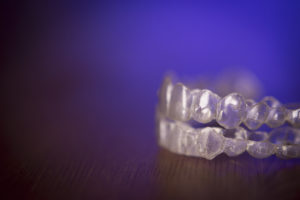
If braces are fit too early on a child, treatment can take longer and be more expensive. For this reason, it’s important to have regular orthodontic visits to monitor tooth and jaw development to ensure that whenever your child receives braces, it’s at the correct time. The braces that your orthodontist recommends will depend on your child’s type of problem that he or she has. There are three types of braces that most children will receive, and they each have different advantages and disadvantages:
- Traditional metal braces – Have steel ties holding the wires between the brackets in place. Cost is driven by what your orthodontist will charge for treatment, including multiple office visits.
- Damon braces – Do not have steel ties, but the brackets themselves hold the wires in place. Typically more expensive and can cost up to $8,000, but you pay for less dental appointments since the braces are self-ligating.
- Invisalign (or other clear or removable aligners) – Fit over the child’s teeth similar to a mouthguard. Your child will receive a number of aligners during the duration of their treatment, so cost is determined by the amount of aligners needed to achieve correction.
Just like adult orthodontics, child orthodontics can cost anywhere between $3,000 and $8,000, depending on what level of correction your child needs. If your child needs to have teeth extracted or be fitted for other appliances, the cost will most likely go up, as well. The way your child complies to orthodontic treatment will also affect the cost. Make sure that they are brushing and flossing everyday so as to avoid tooth decay, which will increase the cost of treatment as your dentist will have to treat around the braces to fix the decay.
Is It Necessary?
As mentioned before, whether your child needs braces or not at an earlier age is dependent upon their mouth structure and how their teeth form. For more information about child orthodontics or if you’re interested in scheduling a consultation, contact Belmar Orthodontics at (303) 225-9016!. Our experienced and highly trained orthodontic staff offers a variety of orthodontic treatments and technology so that you can be confident your children are receiving the best care available.
Change Your Smile in 2019

Millions are ready to make changes in their life with the start of a new year. If you haven’t already, consider adding resolutions to transform your smile in 2019. This is quite easy to do if you have the right tips to get started. Whether you want a whiter smile, straighter smile or you want to change your oral health issues, you can achieve it.
Resolutions 2019
Making New Year’s resolutions is something that countless millions will do in the month of December. For many, the start of a new year is a time for reevaluating health and life goals, and a time when many recommit to goals they didn’t quite reach. Some of the top resolutions include:
- Eating healthier
- Exercising more
- Smiling more
- Saving money
- Making better health choices
- Sleeping enough
- Being social
Did you notice that oral health isn’t anywhere on the top resolutions that people make? Oral health is often overlooked because it seems like something so small compared to your overall health. However, your oral health is directly related to how healthy you are. Improvements to your smile and mouth health can improve your health and wellness.
Many chronic conditions become worse if your oral hygiene is lacking. Some include diabetes, heart disease, autoimmune disorders, and anything that has to due with your nutrition. With chronic oral health problems such as extensive tooth loss, your overall health will decline rapidly. You may not be able to eat, and chewing, biting, smiling and other basic functions will become difficult. However, most oral health issues are avoidable by simple habits done daily. You have heard of most of these habits already, as they are the basics you hear from the dentist every time you go in for a visit. However, most people can improve their technique with oral hygiene even if they are already doing the basics.

Small Changes, Big Results
Our patients either have braces on their teeth or they are looking to get them. Great oral health is needed if you want to get braces on your teeth. We make sure that our patients are free of cavities and gum issues before orthodontic treatment happens. That means, a dental visit is needed to check for any dental issues beforehand. When dental issues are there, they are fixed and great oral hygiene must be followed thereafter. That includes:
- Brushing. Brush your teeth at least twice a day with fluoride toothpaste. With braces, brush after every meal. Use a proxabrush tool or a Waterpik to dislodge stuck food. Brush in all different directions, especially with the brackets. Replace your toothbrush every 3 months or when the bristles become frayed.
- Flossing. This step is skipped often, but is so important to your smile! Flossing gets 40% of your tooth surfaces. If you want a better smile with braces, you gotta floss or that smile will be damaged. Whether you have braces or are getting them, make the decision to floss 1-2 times every day, using floss threaders or threadable floss.
- Nutrition: Skip the sugary foods as much as possible. This leads to plaque production and tooth decay. Avoid carbonated drinks or ones with citrus that leads to tooth erosion.
Continuous Oral Problems
If you brush, floss, visit the dentist and use oral health aids like mouthwash and fluoride, you may wonder why you still get cavities and gum problems. Studies show that your smile and oral health can be determined by genetics in some cases. Some genes that run in families or specific cultures can make you more susceptible to oral health diseases. For example, those of African descent have specific genes that make them more susceptible to gum disease.
If you have specific conditions that run in your family such as heart disease or diabetes, oral health problems will likely follow suit. This is not inevitable, but something you must be aware of. If you have any sort of chronic condition, make sure you are doing all that you can to have good oral hygiene habits throughout your day. If you continue to have frequent oral problems or issues with your smile, we can go over proper oral hygiene methods during one of your orthodontic appointments. Great oral hygiene and following proper techniques is very important to keeping your teeth healthy and strong, especially with braces. Sometimes, all it takes is changing up your technique or what you are eating to have better oral health and a better smile.
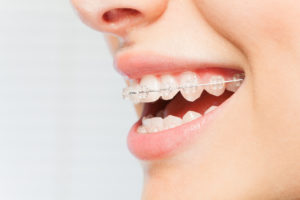
Cosmetic Changes to Your Smile
If you want to completely transform your smile in 2019, don’t wait to get orthodontic treatment. Studies show that getting braces is a great way to not only help you reduce your oral health problems, but an excellent way to get a better smile. Orthodontic treatment generally takes 18 months or less from start to finish. Some patients only need braces for 6 months depending on their teeth and what treatment option they choose.
There are many orthodontic options patients have to transform their smile, and half of them are invisible options. That means, you can’t see the appliances on your teeth. You have the options of:
- Traditional Metal Braces – These are the classic metal bracket and wire option that is most commonly chosen by patients.
- Ceramic Braces – These have the same bracket and wire design of metal braces, except that they are made out of white ceramic material. This helps decrease demineralization during your orthodontic treatment.
- Lingual Braces – This is a discrete metal braces option that is placed on the back of your teeth. Instead of just a square bracket, the metal must be custom-made to the shape of the back of your teeth.
- Invisalign Treatment – This is the most invisible option available to our patients. Invisalign is a series of transparent aligners that you wear at night and throughout the day. You can remove them for eating, playing sports, cleaning your teeth and more.
To choose your option today, call Belmar Orthodontics at (303) 225-9016!
Adjusting to Lingual Braces

There are four main types of braces that include traditional metal braces, ceramic braces, lingual and Invisalign treatment. When patients want sturdy metal for effective straightening power, but they don’t want visible metal, lingual braces is the option to choose. This consists of an orthodontic appliance attached to the back of the teeth. With any orthodontic appliance attached to the teeth, there will be an adjustment period for patients.
Why Get Braces?
Many people wonder why they would need orthodontic treatment if they are already seeing a dentist. However, a dentist is not the same as an orthodontist. Both have gone to dental school, but only an orthodontist can correct bite and alignment issues that would cause oral health diseases, problems with speech and issues with eating. Straighter teeth are teeth that are easier to clean, helping you avoid oral health diseases.
The teeth are less likely to crack, chip, fracture or break from uneven biting pressure when they are straighter. Studies show that people who straighten their teeth often feel more attractive, confident and motivated, and others view them that way as well. Braces can not only help reduce your risk of oral health problems (or help them to go away), but they can make you feel like a million bucks from the beautiful smile you receive.
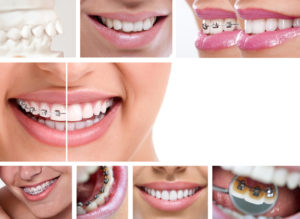
What Are Your Options?
In the past, traditional metal braces were the only braces option patients could get. Today, there are four main orthodontic options. Those include:
- Traditional Metal Braces – These are the classic metal bracket and wire option that is most commonly chosen by patients. Patients who chose this option come in to have their wires tightened at each appointment.
- Ceramic Braces – These braces are a close cousin to metal braces. They have the same bracket and wire design of metal braces, except that they are made out of ceramic material. This helps decrease demineralization during your orthodontic treatment. Ceramic material is also naturally white, helping these braces to blend in with your teeth more than metal would.
- Lingual Braces – These are metal braces that are placed on the back of your teeth. Instead of just a square bracket, the metal must be custom-made to the shape of the back of your teeth. This is a discrete option that adults and teens love.
- Invisalign Treatment – This is the most invisible option available to our patients. Invisalign is a series of transparent aligners that you wear at night and throughout the day. You can remove them for eating, playing sports, cleaning your teeth and more.
Adjusting to Lingual Braces and More
For many patients, the adjustment period with their orthodontic appliance will be a new experience. Getting braces on the teeth is a new and exciting chapter for anyone that is starting on their journey to a better smile. However, your mouth does have to physically adjust to orthodontic appliances. With traditional metal, ceramic, or lingual braces, there are orthodontic parts that will be bonded to the teeth with a cement-like bonding material.
The application of that bonding material with your teeth will place extra pressure on them for several days. You may have to take an over-the-counter painkiller (like Tylenol) to help ease that aching feeling. Soft foods like yogurt or pasta will be better after the braces application for sensitive teeth. Your tongue will have to adjust to orthodontic appliances as well. For traditional metal braces on the front of your teeth, they may feel bulky as they rest against your lips.
With lingual braces, your tongue may feel more crowded or may constantly run into the brackets. With both of these options, a patient’s mouth becomes used to the appliances so quickly that they won’t even notice the braces after a few days. Your smile won’t look bulky with your appliance, but it will start to look straighter over time. Cleaning your teeth will take a bit more work, but this too will become second nature to you. With each new braces adjustment, your teeth may feel a bit sore, but that feeling will go away quickly.

Keeping Your Smile Healthy
You can spend 18 or more months straightening your teeth, only to have them be decayed at the end of your treatment. However, this doesn’t have to happen if you are taking meticulous care of your teeth with braces on them. Patients should be brushing and flossing their teeth whether or not they have braces on them. The American Dental Association recommends that every person brush their teeth at least twice a day. With braces, you want to brush them very well after every meal to dislodge food that would cause decay.
Flossing is key as well, as flossing gets about 40% of your tooth surfaces that brushing misses. If you skip flossing all the time, all those tooth surfaces can decay. With braces, you won’t be able to do the normal flossing you’re used to. Lingual braces can be even harder if you can’t see where you are flossing. This is where flossing tools for braces come in handy. Invest in threadable floss or flossers (which is very similar). This is floss that you stick through the cracks in your teeth and pull through like a sewing needle. You floss the tooth, scraping the teeth as you go, and pull the floss all the way through the tooth to start on a new one. It only takes a minute or so more than normal flossing, but will help prevent decay with your lingual braces.
Braces Are an Investment
Your teeth may take a bit more time to keep clean with braces on them than they were before. However, with braces such as lingual braces, you’re making your smile straighter and more beautiful for years to come. That straightness will not only help make cleaning the teeth easier for years, but it will help your appearance and your confidence. If you want all the benefits of a beautiful, straight smile, call Belmar Orthodontics today at (303) 225-9016!
Fun Facts About Orthodontics
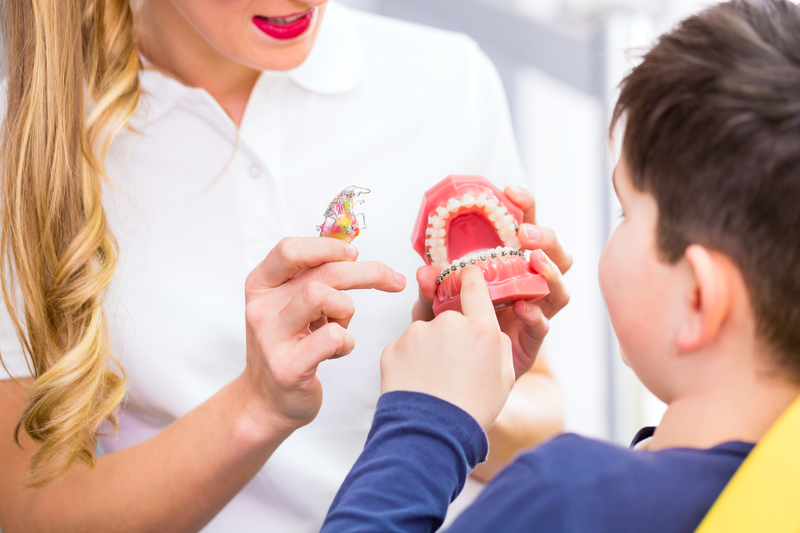
Did you know that an orthodontist is different than a dentist? Orthodontics is a dental specialty all its own, that has different goals and processes than what dentists do. There are many ways to fix the teeth and many methods that have been tried for many centuries. Find out the amazing history of orthodontics and some facts you may not know!
History of Orthodontics
People have been straightening their teeth since the time of the Ancient Egyptians, as can be seen from mummies from this era. Even the Romans and Etruscans used crude orthodontic straightening methods to get a better smile. Many philosophers hypothesized better ways to straighten the teeth. A Roman writer Celsus (1 A.D.) thought the teeth could be pushed into place. Pliny—around the same time—thought the teeth could be filed to be the ideal shape and size.
It wasn’t until 1728 that Pierre Fauchard—or the “Father of Dentistry”—made great strides with orthodontics. He first practiced crudely removing the teeth, replacing them straight, and tying them to other teeth so they could heal straighter. From his influence and others after him, modern orthodontics came to be. Matthaeus Gottfried Purmann developed dental impressions in the 17th century. In the early U.S. years, barbers and medical professionals experimented and performing small orthodontic treatments. This was until the first dental school was established in 1828.
Afterwards, J.S. Gunnell invented a form of headgear that was successful in straightening the teeth. Dental students and professionals figured out how to make a metal appliance to straighten individual teeth, which led to the now-used bracket and wire design in modern orthodontics. Before 1970, orthodontists wrapped wires around each tooth and required that headgear to straighten. This practice involved lots of metal in the mouth, which is why a better form (that we use today) was invented in the following years. Now, in the last 20 years lingual braces (braces behind the teeth) and Invisalign (transparent aligners) were invented to allow patients a hidden apparatus with orthodontics.
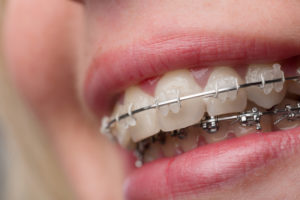
What Do Orthodontists Do?
Did you know that orthodontists are dentists? Every orthodontist is a dentist because they have completed dental school and then some. However, not all dentists are orthodontists. The standard requirements for dentists are to complete 4 years of undergraduate schooling and then 4 years at a dental school. They will have to pass exams and become certified to do dental work. Orthodontists do all of those 8 years, plus they complete 2-3 more years of orthodontics, training in bite and alignment correction and surgical orthodontics. All throughout their career, both dentists and orthodontists must do continuing education courses as well as pass tests to continue working.
An orthodontist will not fix your cavity even though they may spot the signs of tooth decay. Often, an orthodontist works closely with a dentist, as both professionals work on your mouth. What one professional doesn’t do, the other will do. Dentists do everything relating to tooth decay (cavities), gum disease and other oral health diseases as well as remedying dental emergencies. An orthodontist performs services that a dentist doesn’t do such as:
- Bite and alignment correction in children and adults (child orthodontics and adult orthodontics)
- Surgical orthodontics, which is surgery to help remedy a misaligned jaw or bite.
- Braces design, fitting, adjusting and complete process with lingual braces, ceramic (clear) braces, traditional metal, and Invisalign treatment.
- Training in placing temporary anchorage devices, which are tiny screws in the mouth that push, pull, lift or intrude teeth that are being straightened.
- Designing and creating retainer devices to keep bite, alignment and teeth in proper position.
Facts About Braces
- An orthodontist must complete 4 years of dental school, plus 3700 hours or specialized training in orthodontics to get their degree.
- There are more than 19,000 orthodontist members under the American Association of Orthodontics in the U.S., Canada and abroad.
- 1 in 4 people with braces are adults.
- Children make up another 1/4th of people wearing braces to correct bite and alignment.
- Because of modern technology, all four of your dental options (lingual, metal, ceramic and Invisalign) can straighten your teeth in about the same amount of time.
- It is possible to only get braces in either your upper or lower jaw if the other jaw is straight.
- The jaws stop growing as a child ages. That growth stops towards the end of the teenage years around 17 or 18. Straightening the teeth is effective for people after this age, but it may take longer than it would for children.
- Patients generally see their orthodontist every 6-10 weeks for braces adjustments. Patients with severe bite and alignment issues may need to come in more often.
- Orthodontists often usually have “DDS” or “DMD” after their names. This stands for “Doctor of Dental Surgery” and “Doctor of Dental Medicine”. Both are considered equal degrees, but the degree given depends on the dental school attended before orthodontic training.
- Materials used in metal braces are so light that they won’t set off metal detectors in airports.
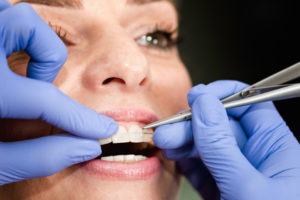
How Do Orthodontics Help People?
If you’ve never been to an orthodontist, you may wonder why you need one. Not everyone may need orthodontics to correct bite and alignment issues, but everyone should see an orthodontist at some point. The American Association of Orthodontics recommends that every person have an orthodontic visit between ages 7 and 8. This is prime time to detect bite and alignment issues that would lead to crooked teeth, speech impediments, oral hygiene diseases, and problems chewing, biting and functioning normally.
When issues are found, they can quickly be corrected so children can grow and develop normally. If a teen or adult wants to straighten their teeth to boost their confidence and success, they can receive braces starting around age 11. For specific questions about our orthodontic services, call Belmar Orthodontics today at (303 225-9016!
Choosing to Have Adult Braces

If you are an adult with crooked teeth, you may think that you already missed your opportunity to get braces. However, adult braces are very popular. In fact, at least 1/4th of all braces wearers are adults. You simply might not see braces on many of your peers because adults have a couple orthodontic options that stay hidden in the mouth. Find out if you should choose to have adult braces, what the benefits are, and what options you have to straighten your teeth discreetly!
Do Adults Wear Braces?
The American Association of Orthodontics recommends that every person have an orthodontic evaluation between the ages of 7 and 8. This is prime time for orthodontists to correct bite and alignment issues that can become severe as a child ages. However, not everyone knows that they need to see an orthodontist, nor do many people have the means to receive orthodontic care due to cost. That opportunity may come when you are an adult. Have you missed the mark if you’re already an adult instead of a child? Certainly not!
Orthodontic treatment is a bit harder when you are an adult, but it is not too tricky for us to manage. Orthodontists recommend that children and teens get braces for bite, alignment and issues with crooked tooth when young. This is because the jaws are still growing and the teeth and jaws are more moldable until a teen grows older. As an adult, the jaws have hardened into place, so shifting the teeth and jaws is much more difficult.
However, modern technology definitely allows adults to change their smiles as they please. In fact, 1/4th of all people wearing braces are adults! Adult braces are becoming more and more popular as jobs become more competitive. Adult braces can really give people the edge they need to succeed because it creates a more beautiful, straight smile.
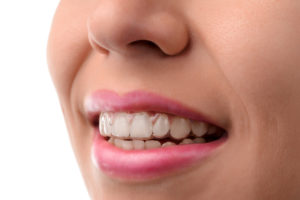
Benefits of Choosing Adult Braces
There is more than just the aesthetics of receiving adult braces. Getting braces can not only improve your appearance, but they can radically change your oral health. Did you know that your risk for tooth decay and gum disease is significantly less with braces? This is because the teeth become straighter, getting rid of all the nooks and crannies plaque and bacteria cluster in with crooked teeth. The teeth are easier to clean, and your smile looks much better, so you’ll actually want to clean your teeth more often.
Many people do love what adult braces can offer their smile. The main advantage is confidence. Many studies have been conducted on the confidence that a smile can bring not only to a person but to others. When you feel self-conscious of how your teeth look, you’re less likely to show your smile to others. This can happen even with children, who may become more introverted because they are self-conscious. However, when smiles are healthy and straight, people tend to show them off more. The more smiling, the more confidence a person feels and the more likely they are to be perceived as such.
The company that invented Invisalign actually conducted studies about this very thing. They found that people who had better, straighter smiles appeared much more confident than those with crooked smiles. The patients themselves felt 60% happier, more attractive and more successful, and others saw them as such. Those with straight smiles were more likely to land a job over their competition and were more likely to be successful with home, school and social life. They were also perceived as 72% more trustworthy just based on first impressions. The benefits of adult braces are endless and all benefit you!
What Options Do You Have?
Adults have all the orthodontic options available to them for straightening:
- Traditional Metal Braces: Consists of a metal bracket and wire design.
- Ceramic Braces: These are very similar to traditional braces, except they are made from white, ceramic material that helps hide them in the mouth. Ceramic material helps prevent tooth demineralization.
- Lingual Adult Braces: These are metal braces that fit behind the teeth and are bonded to the backs of your teeth. Molds are made of the teeth so that the metal can be custom-made to cover your teeth. This option is a preferred one among adults seeking adult braces.
- Invisalign: This orthodontic treatment consists of transparent aligners that are customized to your mouth with a digital machine. You will get a new aligner each week, which you place in your mouth like a retainer. They stay hidden in your mouth, can be removed for regular oral hygiene cleaning and eating, and you get a better smile!

What Can You Expect?
Many people aren’t quite sure what to expect from their first orthodontic visit, as orthodontists don’t do the same work that dentists do. Dr. Hardy will meet with you for an oral evaluation and orthodontics consultation. He will examine your bite and alignment and will determine your candidacy for specific procedures if they are needed. Oral health issues—such as periodontal (gum) disease—will have to be resolved before the teeth can be straightened.
If bite and alignment issues are not present, you can move forward with regular straightening treatment. Dr. Hardy will take impressions of your teeth and will plan out a trajectory of your orthodontic plan. This is where you can know how long you will wear braces and how your mouth should look by the end of your treatment. You will also choose which orthodontic option you would like (traditional, lingual, ceramic or Invisalign) so that appliances can be made to fit your mouth.
After your consultation, your next appointment will be your braces fitting. After that, it’s easy to care for your mouth between quick adjustment appointments. Always brush and floss your teeth, and do these two habits more often than you used to. If you are wanting adult braces, consider Invisalign or lingual braces, as these options keep your orthodontics concealed if you need them to be. For all your questions about adult braces, call Belmar Orthodontics today at (303) 225-9016!

